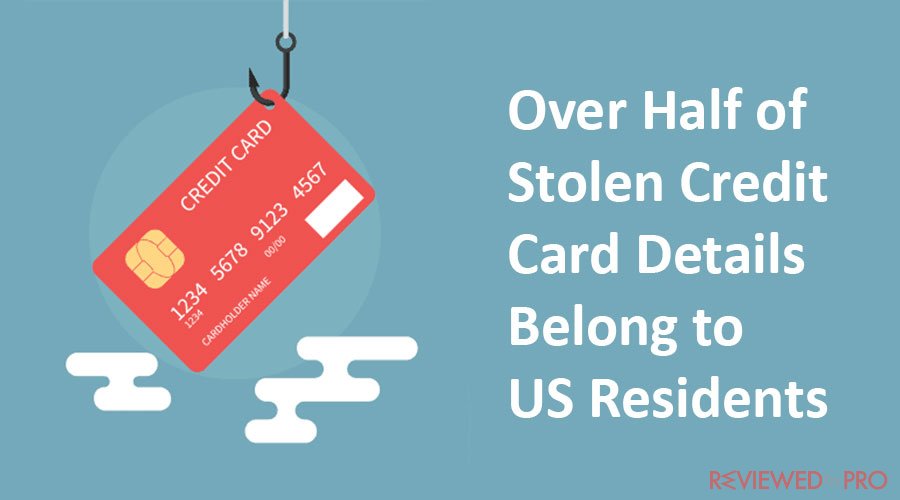
According to recent findings by NordVPN, approximately six million stolen credit card details were examined on the dark web, shedding light on a concerning revelation. More than half of the compromised data, amounting to 3.5 million sets, belonged to US residents or citizens. To make matters worse, a significant number of these card details were bundled for sale alongside additional personal information, including names and addresses.
NordVPN's investigation uncovered that the average price for a set of stolen card details on the dark web was $7, while some were even leaked for free. Americans should be particularly concerned, as their payment details constituted 58% of the analyzed data. Furthermore, around 60% of the stolen credit cards were being offered for sale together with addresses, names, and Social Security numbers.
“Criminals often leave victims feeling helpless, especially in cases of card fraud, as it is incredibly difficult to determine how one's card details were compromised,” stated NordVPN. “Even security professionals are at risk. More direct hacking and theft methods can leave victims feeling even more vulnerable, as cybercriminals obtain more than just their card details.”
The methods employed by cybercriminals to steal credit card data are diverse, ranging from physical means such as card theft and “shoulder surfing” to more sophisticated digital techniques like phishing and remotely hijacking contactless payment details.
In comparison to the United States, Russia had the least prevalence in the list of stolen credit cards, while China ranked as the third least likely country to be affected. India followed the US as a distant second, with approximately 218,000 cards available for sale, and the UK came third with around 164,000.
The study revealed that cards from Denmark commanded the highest asking price at $11.54 per set, closely followed by Japan, Portugal, and Ukraine. However, US cards were sold slightly below the median average, at $6.86, suggesting that cybercriminals targeting Americans prioritize quantity over quality.
Among the countries analyzed, Argentina and New Zealand offered the cheapest credit card details, priced at approximately $2.50 each. NordVPN did not provide further details regarding the free leakage of cards, but their research indicated that such instances might involve bundling them with other forms of stolen data.
NordVPN's examination covered credit card details from nearly 100 countries, accounting for approximately half of the world's total.
To conduct the study, NordVPN enlisted independent investigators who scoured eight illegal websites to identify and monitor the six million stolen cards. It is important to note that NordVPN emphasized that no personally identifiable information belonging to victims was obtained during the investigation.
“The data received from these third-party researchers did not include any information relating to identified or identifiable individuals, such as names, contact information, or other personal details,” NordVPN clarified.
how to protect my credit card data from being stolen?
Protecting your credit card data from being stolen is essential to ensure the security of your financial information. Here are some important steps you can take:
-
Keep your physical card secure: Always keep your credit card in a safe place, such as a wallet or a cardholder. Avoid leaving it unattended or easily accessible to others.
-
Be cautious with your card information: Only share your credit card details with trusted and reputable entities, such as legitimate online merchants or financial institutions. Avoid providing your card information over the phone or through email unless you initiated the contact and are certain of the recipient's authenticity.
-
Use secure websites: When making online purchases, ensure that the website has a secure connection. Look for “https://” at the beginning of the URL and a padlock icon in the address bar. These indicators signify that the website encrypts your data during transmission, making it more difficult for hackers to intercept.
-
Be cautious with online transactions: Use reputable online merchants and avoid suspicious or unfamiliar websites. If something seems too good to be true, it probably is. Be wary of phishing attempts, where scammers impersonate legitimate businesses to trick you into revealing your credit card information. Double-check the website's URL, and be cautious with email links and attachments.
-
Monitor your accounts regularly: Keep a close eye on your credit card transactions and statements. Review them frequently to spot any unauthorized or suspicious activity. If you notice anything unusual, report it to your card issuer immediately.
-
Use strong and unique passwords: When creating online accounts associated with your credit card, use strong, unique passwords that include a combination of letters, numbers, and symbols. Avoid using easily guessable information such as your name or birthdate. Consider using a password manager to securely store and generate complex passwords.
-
Enable two-factor authentication (2FA): Many online services and financial institutions offer two-factor authentication, which provides an extra layer of security. Enable this feature whenever possible, as it typically requires both a password and a verification code sent to your mobile device to access your account.
-
Be cautious in public spaces: When using your credit card in public places, shield the keypad when entering your PIN to prevent others from seeing it. Be aware of your surroundings and ensure no one is watching or attempting to capture your card details.
-
Secure your devices: Keep your computer, smartphone, and other devices up to date with the latest security patches and antivirus software. Use strong passwords or biometric authentication to unlock your devices. Avoid connecting to unsecured or public Wi-Fi networks when conducting sensitive transactions.
-
Regularly check your credit reports: Obtain a free copy of your credit report from each of the major credit bureaus (Experian, TransUnion, and Equifax) at least once a year. Review the reports carefully for any inaccuracies or suspicious accounts that could indicate fraudulent activity.
By following these practices, you can significantly reduce the risk of your credit card data being stolen. Remember, staying vigilant and proactive is key to protecting your financial information.




